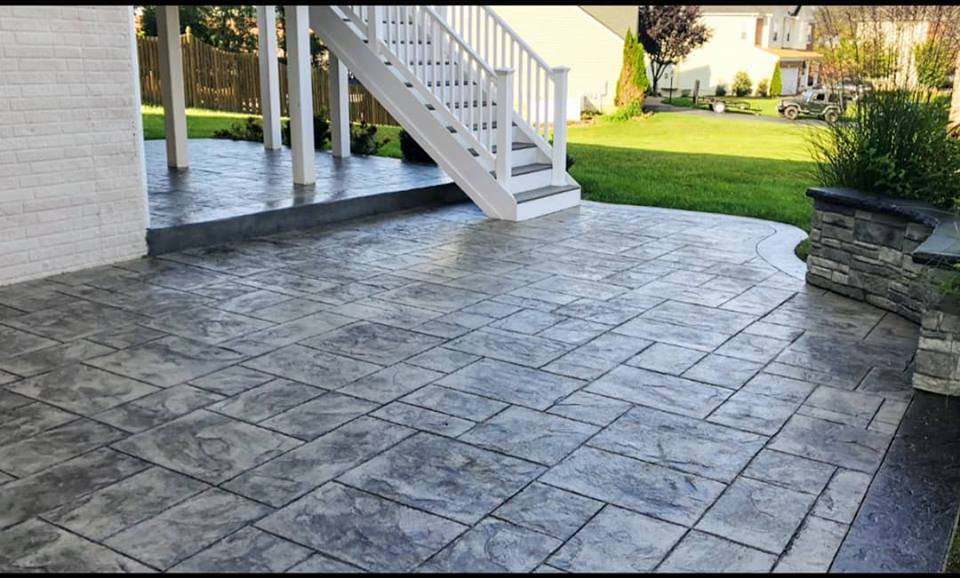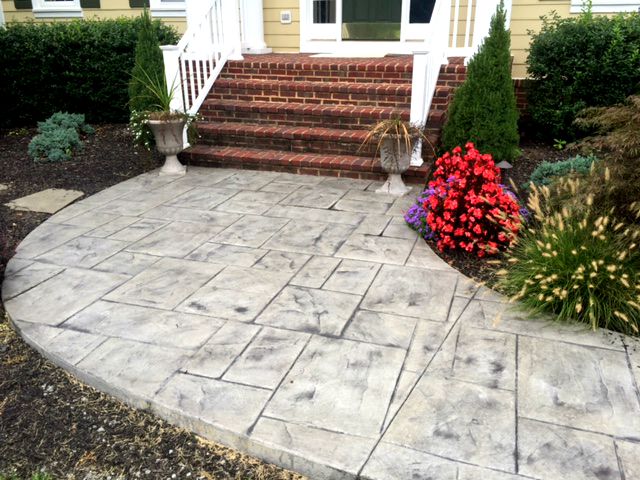
Fall is here and it’s more important than ever to maintain the upkeep on your concrete surface to ensure longevity.
Give your concrete surface a good cleaning. Clear off all the summer grim. Get out the pressure washer and with a mild cleaner, rinse off any dirt.
The leaves are beautiful but can create issues if not tending to. Wet leaves can leave stains or marks on your concrete surface if they are left over time. As soon as the leaves start falling, keep your concrete surface clear of any debris.
If you haven’t already you need to properly seal your concrete. A sealer will improve the appearance of stamped concrete, prevent fading caused by UV rays, and protect it from stains and harmful chemicals. Continue reading Why You Should Seal Stamped Concrete
As the days and nights get colder we need to prep for the ice to follow. Be cautious with the solutions you use on your concrete surface. Concrete can be weakened when subjected to rock salt. While concrete is a tough and durable material, it can and will absorb water. When you put out rock salt to melt snow and ice, the salt dissolves the snow and makes a salt water mix that then enters the pores of your concrete.When the temperatures drop and the water freezes, the pressure of growing ice crystals within the concrete can cause spalling (the surface becomes rough and flaky, and begins to pit). On a low level, this can be purely cosmetic, but it can also result in structural damage. Consider using sand instead.
Give us a call or schedule a follow up to see how your concrete surface is hold up and discuss the proper maintenance options.






